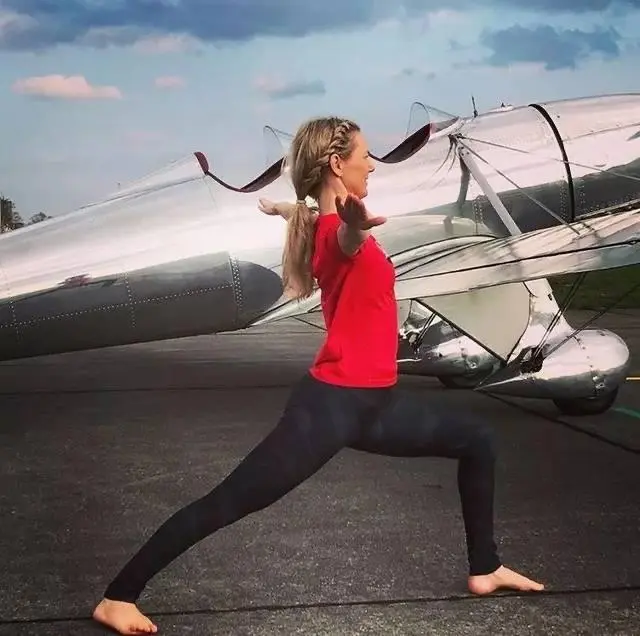A few days ago, someone left a message saying that he had also taken yoga classes for a few days, such as the most basic triangle pose, warrior series, tree pose, these basic poses, I feel that I can do it, but recently I found that basically I can’t find it. strength. The foundation of the feet, the strength of the hips and legs, and the alignment of the pelvis are almost nothing. The teacher said to practice more basic asanas, but what should I do if these most basic asanas can’t find the point of strength?3 basic movements that yoga beginners must learn

So today I will introduce you to the three basic asanas, which can also be said to be the first step in the yoga stance, which is equivalent to the horizontal and vertical strokes of learning Chinese, and the Arabic numerals of the first number. If you can’t even find a sense of strength in the basic asanas, you can practice these asanas more. It doesn’t have to be on the yoga mat, you can feel it at any time when you are not practicing yoga.
Take a look at the foundations of the three foundations I have selected for you
1. Limb stretch
Stand in the middle of the mat, feet wide apart to the sides, knees and toes facing straight ahead, hands flat on the sides or hips.
As if we usually lie down and spell out the big characters with our bodies.
This is a foot-separated asana, which is a light version of Mountain Pose. You can adjust this asana according to the requirements of mountain pose. Feelings that are not found in mountain poses are easy to find in this asana.

For example, the base of the feet is down, the center of gravity is shifted to just below the ankle, the position of the sole of the foot, the knee is raised, the inner thigh is raised, the front of the thigh is pushed back, the ilium is upright, the middle of the hip is pushed forward, the pelvis is upright, and the spine is upright . You can find it point by point, and each point is easier to find and adjust in place than in mountain pose. Because of the shortcomings in the mountain pose, it will be magnified in this pose, and it is easy to find.
Once you’ve done this asana, slowly reduce the distance between your legs until you can still get the points mentioned above in place in Mountain Pose with your feet together.
2. Limb side stretch
On the basis of the extension of the limbs, the sole of the right foot is externally rotated by 90 degrees, the knee and toes are facing forward; the sole of the left foot is slightly buckled inward, and the pelvis is straight, which is the side-extending pose.
There is one more foot turn than the four-body stretch. It is very important to learn to turn the feet correctly. For example, the upper legs of the tree pose, the triangle pose, the side angle extension pose, the war two, the half-point, etc., the asanas that open both sides of the feet, etc., all start from the turning of the feet.

In this pose, you need to learn: After turning your feet, you can still keep your feet evenly bearing the weight of your body, keep your pelvis straight, the midline of the front thigh of the turned foot, and the knee. The shinbone of the calf, the midline of the ankle, and the second and third toes are still in a straight line, and the hips are retracted, the ischium on both sides is at the same height, and on a horizontal plane; the inner leg should be fully activated, and the state of the upper limbs extension is the same.
3. Standing airplane
On the basis of the extension of the limbs, the left foot is buckled 60 degrees inward, the right foot is rotated 90 degrees outward, the hips are turned to face the direction of the long side of the mat, and the hands are raised sideways or supported by the hips.
This time it’s not just the feet, but the whole hip as well. It is the basis of all asanas with feet separated forward and backward.

In this pose, you need to learn: after turning around, you can still maintain even force on your feet, start your legs, and more importantly, keep your pelvis straight. The most common mistake to make in this type of asana is to lose the strength of the hind legs and the pelvis back and forth.
Think about all the standing poses, whether the foundation is covered by these three basic poses. So when you have nothing to do, practice more limbs stretching, and then learn to turn feet and hips from limbs stretching. The key is to bear the weight of the body evenly on the feet, start the legs together, and keep the pelvis straight. Find these 3 points, and the foundation of all standing poses will be fine. As long as the foundation can be established, other issues can be left to time.
Sharpening knives does not cut wood by mistake. Practice these three movements well, or every time you go to the mat, practice each of these three movements in two sets before starting to practice, and find the point of exertion. Your body has memory. Yes, it will definitely have a positive effect on your later asanas.
Read more tips about health and fitness http://www.growmorehealth.com
